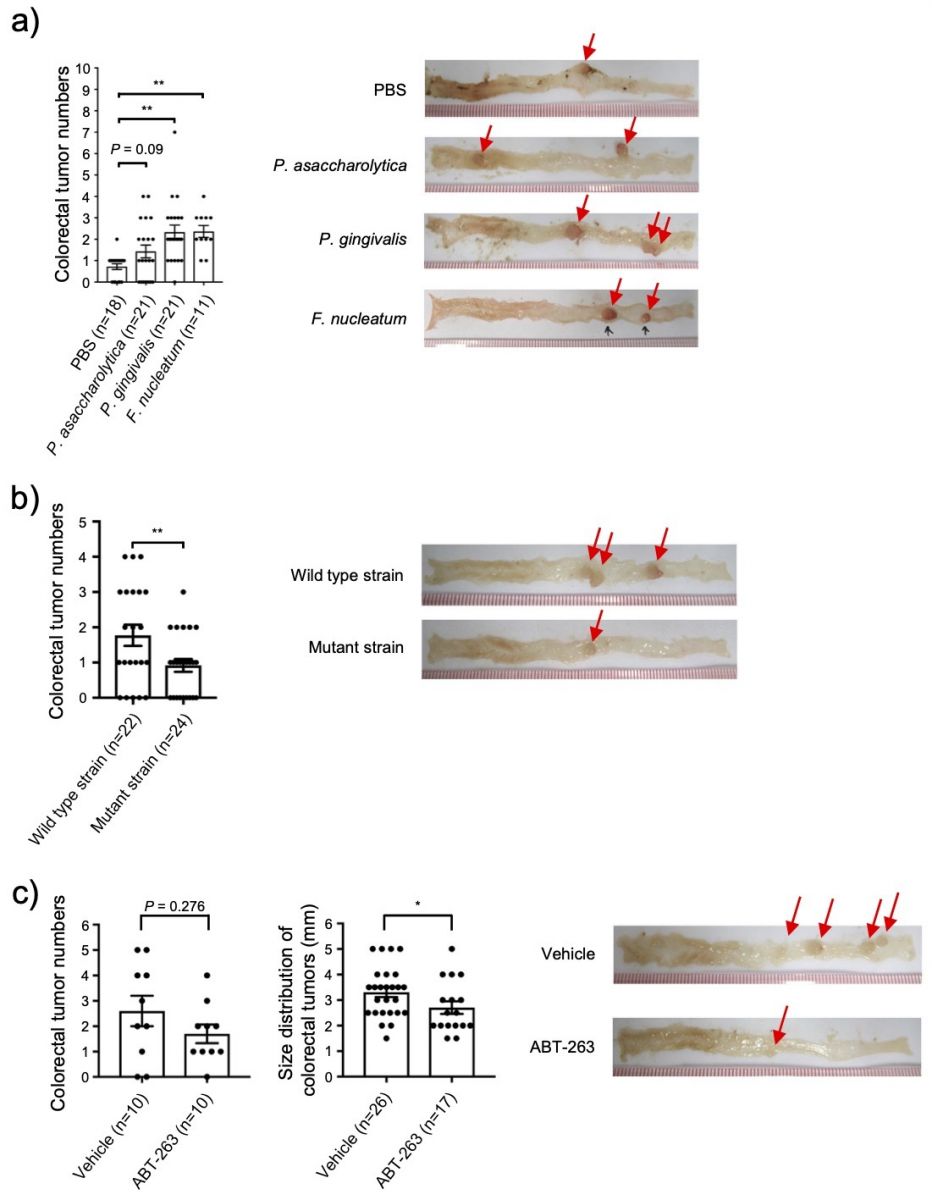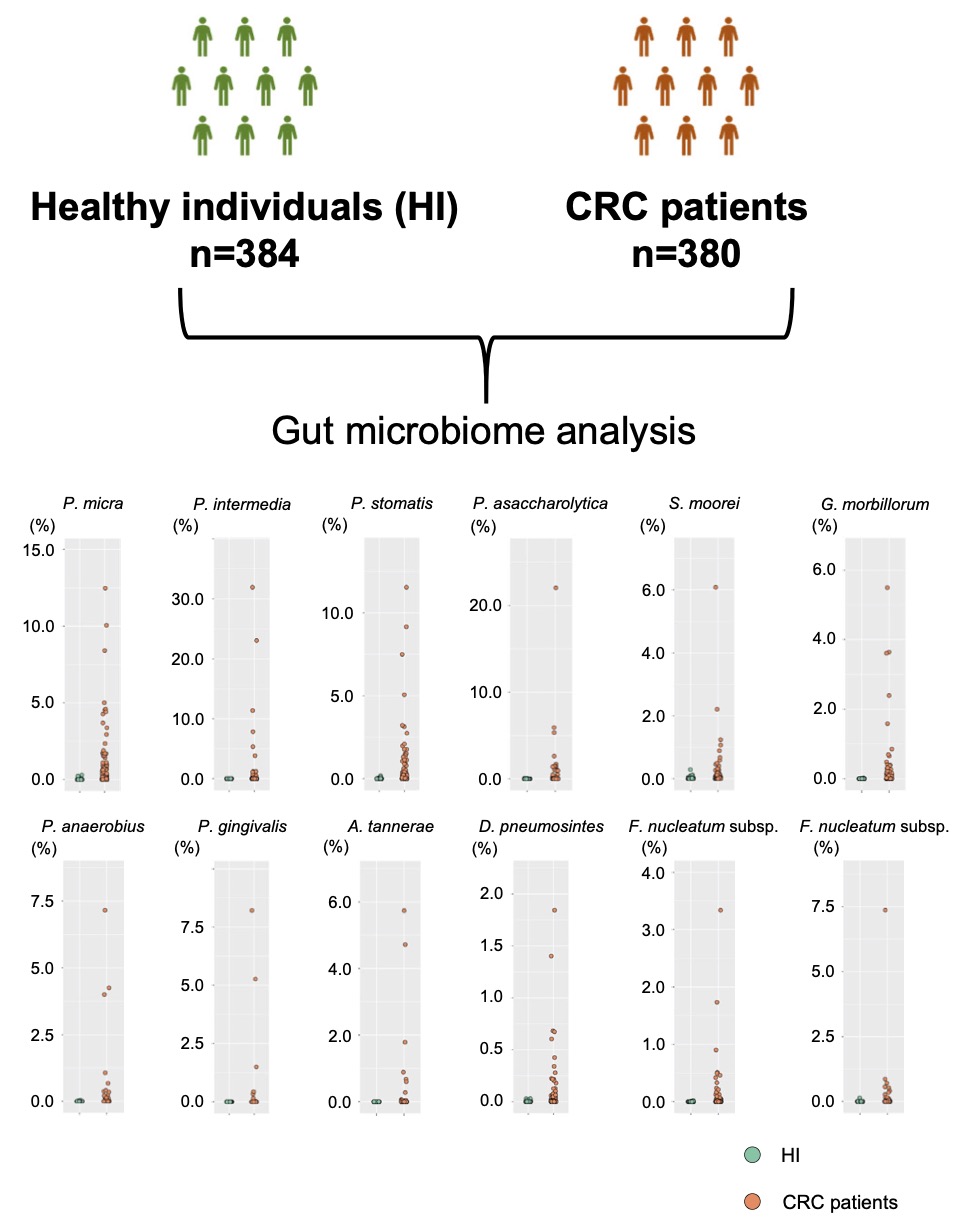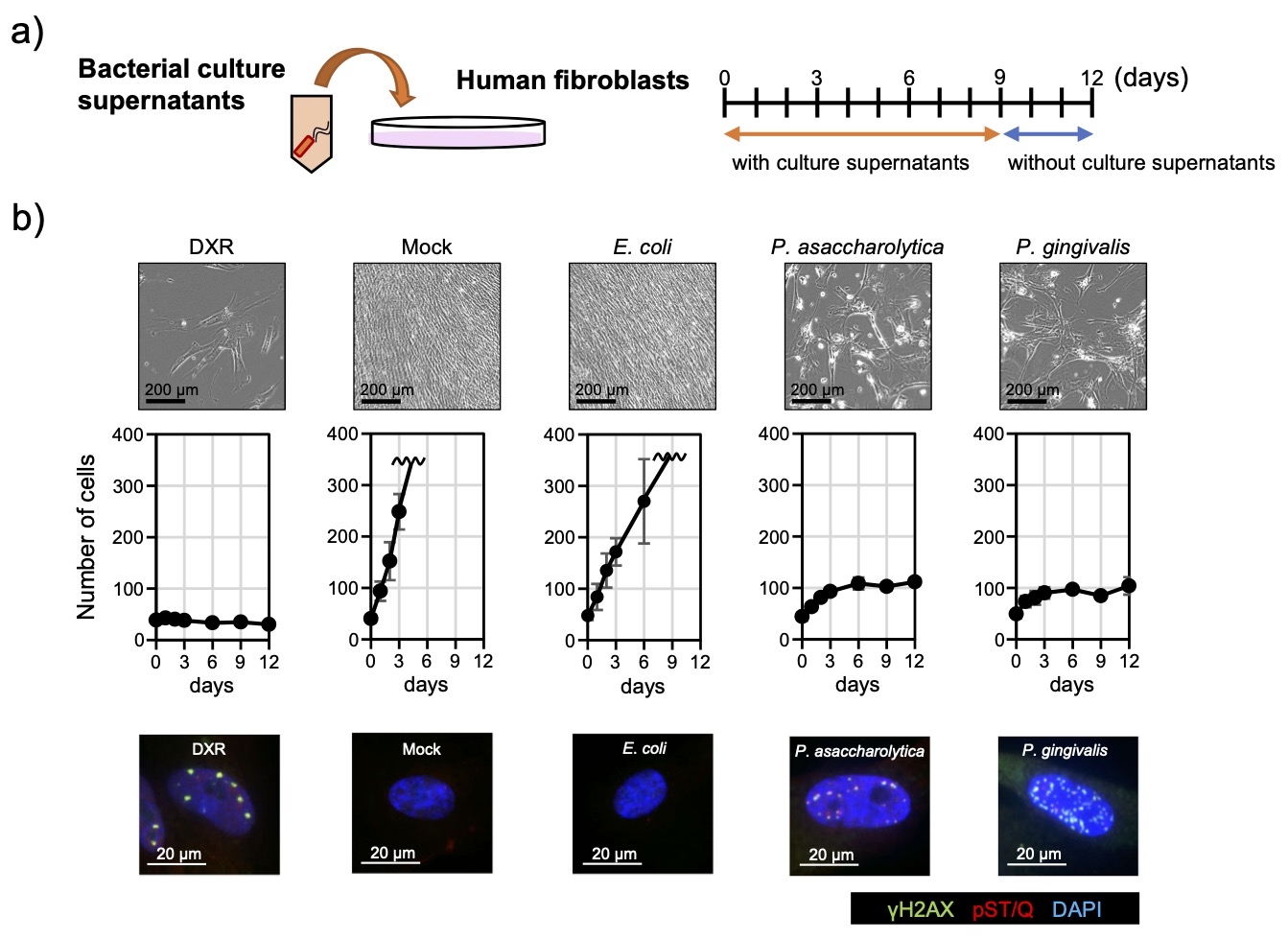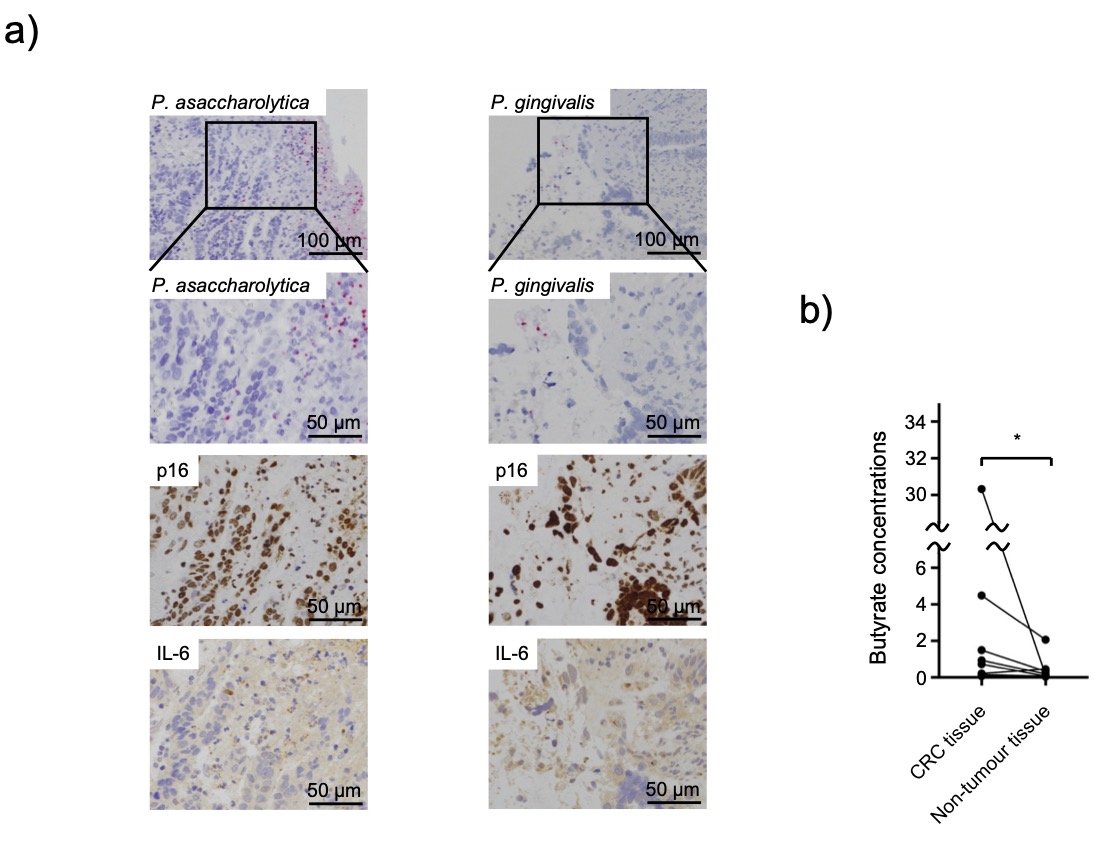Gut bacteria identified in colorectal cancer patients promote tumourigenesis via butyrate secretion (Hara Lab, in Nat Commun)
Emerging evidence is revealing that alterations in gut microbiota are associated with colorectal cancer (CRC). However, very little is currently known about whether and how gut microbiota alterations are causally associated with CRC development. Here we show that 12 faecal bacterial taxa are enriched in CRC patients in two independent cohort studies. Among them, 2 Porphyromonas species are capable of inducing cellular senescence, an oncogenic stress response, through the secretion of the bacterial metabolite, butyrate. Notably, the invasion of these bacteria is observed in the CRC tissues, coinciding with the elevation of butyrate levels and signs of senescence-associated inflammatory phenotypes. Moreover, although the administration of these bacteria into ApcD14/+ mice accelerate the onset of colorectal tumours, this is not the case when bacterial butyrate-synthesis genes are disrupted (Figure.4). These results suggest a causal relationship between Porphyromonas species overgrowth and colorectal tumourigenesis which may be due to butyrate-induced senescence.
This article was published in Nature Communications on xxx xx, 2021.
Title: “Gut bacteria identified in colorectal cancer patients promote tumourigenesis via butyrate secretion”
Authors: Shintaro Okumura, Yusuke Konishi, Megumi Narukawa, Yuki Sugiura, Shin Yoshimoto, Yuriko Arai, Shintaro Sato, Yasuo Yoshid, Shunya Tsuji, Ken Uemura, Masahiro Wakita, Tatsuyuki Matsudaira, Tomonori Matsumoto, Shimpei Kawamoto, Akiko Takahashi, Yoshiro Itatani, Hiroaki Miki, Manabu Takamatsu, Kazutaka Obama, Kengo Takeuchi, Makoto Suematsu, Naoko Ohtani, Yosuke Fukunaga, Masashi Ueno, Yoshiharu Sakai, Satoshi Nagayama, and Eiji Hara

Figure 4. Bacterial tumorigenesis in ApcΔ14/+ mice
a) The number of colorectal tumors in mice administered P. gingivalis and, to a lesser extent, P. asaccharolytica by oral gavage was increased as compared to that in control (PBS) mice.
F. nucleatum: a positive control for colorectal tumorigenesis
b) The number of colorectal tumors in mice administered butyrate synthesis defective mutant strain of P. gingivalis were significantly lower than that in mice administered wild type strain of P. gingivalis.
c) The number of colorectal tumors in mice administered P. gingivalis tend to be reduced by a treatment with ABT-263. The size of tumors were significantly smaller in mice treated with ABT-263 than that in mice without treatment.
Links
-
Figure 1. Gut microbiome analysis Twelve bacterial taxa that were abundant in CRC patients and rarely present in healthy individuals were identified.
-
Figure 2. Screening bacteria that induce cellular senescence in human fibroblasts a) Experimental protocol. b) Culture supernatants of P. asaccharolytica and P. gingivalis induced DNA damage response and cellular senescence in human fibroblasts. DXR: doxorubicin, a positive control E. coli:a negative control γH2AX, pST/Q (phospho-Ser/Thr ATM/ATR): markers for DNA damage response
-
Figure 3. Analysis of colorectal cancer (CRC) tissues a) Invasion of P. asaccharolytica and P. gingivalis into CRC tissues were observed. In addition, senescence-marker positive cells were also observed in the vicinity of bacterial invasion. b) The levels of butyrate in the CRC tissues were significantly higher than those of paired non-tumor tissues.
- Home
- Achievement
- Research Activities
- Gut bacteria identified in colorectal cancer patients promote tumourigenesis via butyrate secretion (Hara Lab, in Nat Commun)










